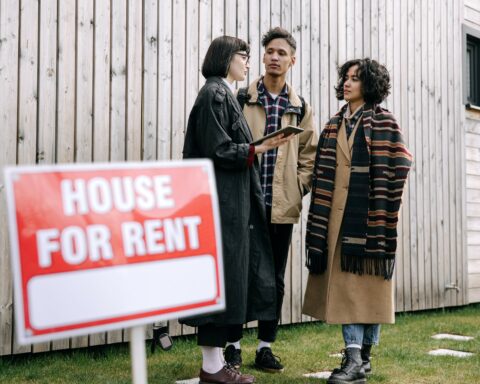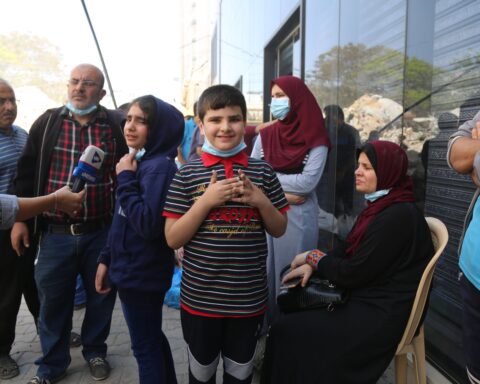While the Liberal government announced this week that there would be 10,000 Syrians admitted to Canada by the end of 2015 and 15,000 by the end of February 2016, Minister of Citizenship and Immigration John McCallum failed to offer many specifics regarding housing the refugees.
The ad-hoc committee did mention that 36 cities were slated to receive refugees and that the military was prepared to house up to 6,000 refugees on a temporary basis if necessary.
“We don’t know what our provincial numbers will be either. We don’t know which of our cities is of that 36. Those are all fairly critical pieces,” says Brett Loney, Communications Director for the Nova Scotia Immigration Department.
In the coming weeks, Loney hopes to have more specifics regarding plans for accommodating the Syrians in Nova Scotia.
“Our partners are going out there, beating bushes like they routinely do,” he says. “Now that we have a clear sense of more [of] the details of the federal approach, it will help them in their work.”
Preparations underway across the country
Jean McRae is the Executive Director of the Inter-Cultural Association of Greater Victoria (ICA) and works with the Greater Victoria Housing Society, BC Housing Authority and other organizations that are offering places for the refugees to stay. She says the response from the community has been tremendous.
Despite them not knowing too many of the details, many have offered to help with the Syrian refugees by donating, volunteering and offering places in their homes.
“We’ve had people say we’ve got a suite in my house or we had someone come say they have a house they have on the market that they’re willing to pull off the market for a year to help,” she says. “We’ve had people who may not have had suites, but have rooms in their houses.”
Many have offered to help with the Syrian refugees by donating and volunteering.
Until further information is available, McRae says that it’s a bit of a waiting game. “At this point, we’re just gathering all this information because until we actually know what’s going on, it’s very difficult to say what we’re going to need.”
Getachew Woldyesus is similarly focused on preparing for the arrival of the Syrians in Regina, Saskatchewan. He has served with the Regina Open Door Society (RODS) for 30 years.
“We are working with the community to support the newcomers regarding housing, school registration, whatever they need for their settlement.” says Woldyesus who is currently the Settlement & Family & Community Services Manager for RODS. “We have volunteers who would be willing to support newcomers.”
Scale is different from previous undertakings
According to Debbie Douglas, the executive director of the Ontario Council of Agencies Serving Immigrants (OCASI), the Syrian refugee influx is different from other waves of immigrants that have come to Canada because of the sheer number of applicants and the tight timeline.
“What is different is that we’re looking at 25,000 in a very short period of time. Compared with the Kosovars in 1999, we brought in 5,000 over 60 or 90 days, but certainly it was the same process for bringing in large amounts of people all at the same time,” says Douglas.
However, she feels that public institutions like schools and hospitals are much more prepared to handle the newcomers than in the past.
“I think what’s different [from past immigration waves] is that we have a very robust, sophisticated immigrant/refugee–serving infrastructure in place and so we’re able to hit the ground running when they get here,” she says.
Public institutions like schools and hospitals are much more prepared to handle the newcomers than in the past.
She is still concerned about long-term housing, especially in a large urban centre such as Toronto. Housing prices have increased substantially in major centres such as Toronto and Vancouver and those who have homes are not looking to move anytime soon.
“We don’t have a significant vacancy rate, but I do believe our system will be responsive,” says Douglas. “That’s certainly going to be a challenge, but it’s a challenge anyways for most folks who live in Toronto, to be able to find adequate housing.”
She says they are also working on finding temporary and permanent housing for the refugees, whether they are government-sponsored or privately sponsored.
Proceeding carefully when it comes to housing
While welcoming the newcomers is important, Loren Balisky, executive director with Kinbrace, says the housing situation, particularly the temporary side, should be handled with care.
“I think we have to be careful we don’t warehouse. By necessity we’ll have to. They’re going to [be placed in] army barracks and those kinds of things. But as quickly as possible, they need to be connected to people,” he says.
Kinbrace houses refugee claimants seeking asylum in Vancouver, aiming to foster dignity and respect by showing how refugees are contributing members of society.
“Rather than doing things for people, either do them with and accompany [them]. They’re not objects of our pity. They shouldn’t be objects of our charity either.” says Balisky, who has lived with refugee claimants at Kinbrace for the past 17 years. “There’s something we’ve learned here that can be of value to the wider Canadian population, [which] is to help and welcome.”
Florence Hwang is a Saskatchewan-based freelance writer. She is a media librarian who loves storytelling. She has written for La Source newspaper, CBC Saskatchewan, Saskatchewan Folklore and South Asian Post.





